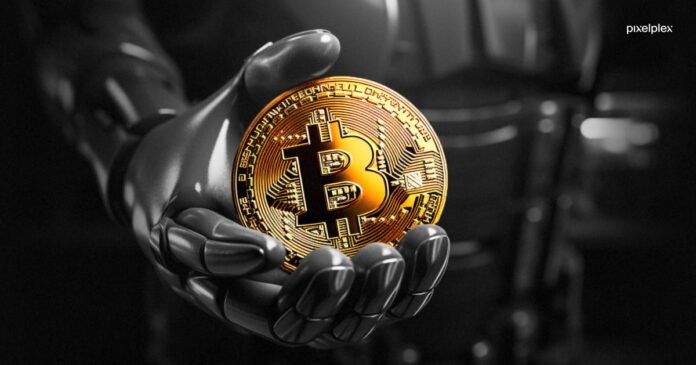Discover how blockchain is changing the world beyond Bitcoin—transforming finance, supply chains, healthcare, and governance by 2025.
Where Bitcoin and Other Cryptocurrencies Come From
Bitcoin made blockchain technology prominent in 2009, but it has come a long way since then. It was once just the backbone of cryptocurrencies. Today, blockchain is a basic technology that promises to change companies, governments, and society all around the world by making things more open, safe, decentralized, and trustworthy. The worldwide blockchain industry is predicted to grow from around $41 billion in 2025 to almost $1.9 trillion by 2034. This is because many different industries, including finance, supply chains, healthcare, and social impact projects, are quickly adopting the technology.
Bitcoin was the first decentralized digital money that didn’t need banks or other middlemen to work. Blockchain, the technology behind it, is a distributed ledger that a network of computers called nodes keeps up to date and uses consensus procedures to check transactions. This new idea not only made it possible for people to send money directly to each other, but it also led to the invention of thousands of other cryptocurrencies, which are all known as “altcoins,” and a whole ecosystem for digital banking.
Bitcoin was mostly a speculative asset and a decentralized currency for more than ten years, and it didn’t really fit in with the conventional financial system. But it showed that digital records can be safe, clear, and tamper-proof without centralized authority, which opened the door for blockchain to be used in many ways.
Blockchain’s Growth Beyond Money
Decentralized Finance (DeFi)
DeFi protocols currently provide open alternatives to traditional banking services like as lending, borrowing, insurance, and trading assets. Smart contracts make agreements automatic and enforceable without middlemen, which cuts expenses by a huge amount and makes it easier for people all over the world to get access to financial services.
Supply Chain Transparency
Blockchain makes it possible to keep track of items from production to delivery without changing them. This makes products more real, cuts down on fraud, and makes recalls easier, which is very important for industries like food safety, pharmaceuticals, and luxury items.
Digital Identity and Privacy
Blockchain-based identity solutions provide people more control over their personal information. They may verify their identity safely without giving out private information. This helps stop identity theft and makes it easier for new customers to sign up.
Healthcare
Blockchain’s security and capacity to be audited make it useful for things like keeping patient information safe, making sure clinical trial data can’t be changed, and making sure pharmaceutical supply chains are clear.
Governments and Voting
Blockchain makes elections and public documents more open, which should help fight corruption and increase trust in government.
Cross-Chain Interoperability
Blockchain networks that used to be separate can now talk to each other through protocols like Polkadot and Cosmos. This interoperability makes it easy to move assets and share data between platforms, which makes the system more scalable and user-friendly.
New Technologies Are Driving Growth
- Layer 2 Solutions: Technologies like rollups and state channels make blockchain networks bigger by processing transactions off-chain while keeping security assurances.
- Zero-Knowledge Proofs: zk-proofs let you make transactions that keep your privacy while still being able to prove them without exposing any underlying facts.
- Enterprise-Grade Platforms: Hyperledger Fabric, Corda, and others are made for businesses that need permissioned blockchains. They can handle complicated processes with tight governance.
- Blockchain as a Service (BaaS): Cloud providers let businesses and developers use blockchain networks whenever they want, making it easier for them to do so.
- Connecting with AI and IoT: Blockchain keeps data safe in sensor networks and uses smart contracts with AI analytics to make decisions automatically.
Effects on the Economy and Society
- Financial Inclusion: In developing countries, blockchain-based microfinance, remittances, and digital currencies make it possible for millions of people who can’t use traditional banks to get financial services.
- Openness and Responsibility: Public blockchains make it possible to check audit trails, which helps stop corruption, illegal logging, fake goods, and contribution fraud.
- Tokenization of Assets: Everything from real estate and art to intellectual property is becoming tokenized, which makes investments more accessible and opens up new prospects for investing.
- New Business Models: Decentralized Autonomous Organizations (DAOs) let people work together to own and run projects without having a single leader.
- Uses in the Environment: Blockchain systems keep track of carbon credits, renewable energy generation, and sustainable supply chains. This encourages people to be more environmentally friendly.
The Landscape for Rules and Working Together
Governments and authorities all across the world have gone from being skeptical of blockchain technology to actively using it. There is now more clarity around tax rules, security, and token classification, which is encouraging more institutional investment. Regulatory sandboxes let people try things out safely, while multinational partnerships help improve standards governance and applications that work across borders.
This level of regulatory maturity makes firms more willing to try new things because they know they can follow the rules and protect customers. It is also speeding up the use of blockchain in fields like healthcare, insurance, and government services that need a lot of scrutiny.
Problems and Dangers
Even though blockchain has come a long way, it still has problems to solve, such as not being able to scale, not being able to work with other systems, being hard to use, and worries about how much energy particular consensus techniques consume. There are still security dangers when it comes to managing keys and smart contract vulnerabilities. To deal with these problems, we need to keep doing research, set industry standards, and improve technology.
What Will Happen in the Future: Blockchain 2025 and Beyond
“Blockchain is the future” has changed to “Blockchain is happening now.” Blockchain is no longer a new technology; by 2025, it will be an important part of digital infrastructure. Its use is growing quickly in both developed and developing markets in fields like banking, supply chain, healthcare, energy, and governance.
We Can Expect:
- More and more blockchain to work with AI, IoT, and cloud computing.
- The growth of multi-chain ecosystems that make it easier to scale and improve user experiences.
- Decentralized finance becoming more common in traditional banking products.
- Blockchain being used more widely for social good, financial inclusion, and democratic governance.
- The public and commercial sectors working together to encourage innovation while making sure that trust and compliance are maintained.
Blockchain’s journey from powering Bitcoin to changing whole ecosystems is one of the most important technology waves of the 21st century. It is important for the development of the global digital society because it might make money more accessible, increase transparency, and establish new digital economies.



